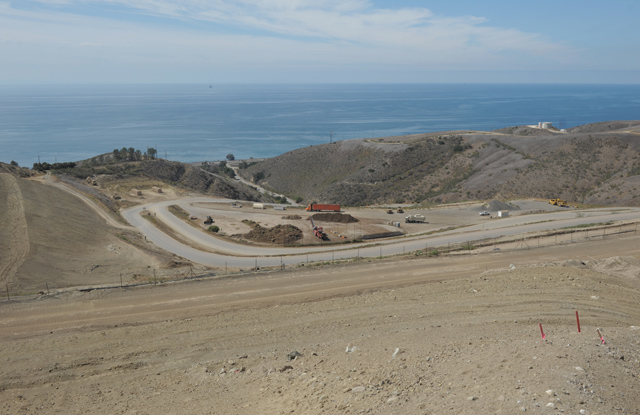City Council Reluctantly Approves Landfill Deal
Hates Idea of Dumping More Trash on Gaviota Coast

Stuck between a rock, a hard place, and a growing mountain of trash, the City Council on Tuesday begrudgingly committed to a 22-year, multimillion-dollar deal with the county to extend the lifespan of the Tajiguas Landfill before it reaches maximum capacity. Their unease came from having to further industrialize an otherwise unspoiled slice of Santa Barbara coastline and facing no better way to deal with the region’s waste streams. “I recognize how distasteful it is to have a landfill on the Gaviota Coast,” said Councilmember Cathy Murillo, “but I’m ready to move forward, acknowledging this is not a perfect solution.”
In a split 4-3 vote, the council agreed to pay $9 million a year to deliver 75,000 tons of trash to the proposed Tajiguas Resource Recovery Project (TRRP), a county-owned facility designed to sort out salable recyclables, generate compost, and convert green waste into electricity. For the project to move forward, it needed the city’s participation — 40 percent of the waste that will flow through the TRRP will come from the city. The rest will come from Goleta, Buellton, Solvang, and the unincorporated parts of the county.
The overall TRRP deal has worked its way through a grueling approval process, with no fewer than 140 public hearings over the last 15 years. Councilmembers were loath to sink it now. “This is a classic dilemma of when to do something,” said Councilmember Gregg Hart, weighing the superior trash-sorting and materials-recovery technologies that will inevitably be developed in the future against the pressing need to keep Tajiguas from filling up now.
City staff has estimated the TRRP will keep as much as 65 percent of Santa Barbara’s trash from being added to the landfill. Right now, 39 percent is diverted, and the dump is scheduled to run out of permitted space within the decade. To cover the cost of the TRRP’s construction and ongoing operations, tipping fees would jump from $87/ton to $120/ton by 2019. The difference would be paid in part by city residents and a 14.6 percent increase in their trash bills. For the average single-family home, that translates to an increase from $36.25/month to $41.54/month.
The county and the project’s developer — MSB Investors LLC, formerly Mustang Renewable Power Ventures LLC — will set out to secure public financing in the form of construction, payment, and performance bonds early next year. They hope to take advantage of current low interest rates.
In her vote against the deal, in which she was joined by councilmembers Jason Dominguez and Bendy White, Mayor Helene Schneider noted that the city was setting the stage for Tajiguas to be used for not just 20 more years, but 40 more years, as that’s how long the new $122 million facility is expected to operate. She also lamented alternative locations were not studied more closely. White similarly struggled with the timeline. “Once we get to the end of 20 years, how are we going to walk away from a $100 million operation?” he asked. “I don’t see us doing that.” White solemnly acknowledged the gravity of the deliberations: “This is one of the most important decisions the council has had to make in my time here.”
Environmental attorney Marc Chytilo, speaking on behalf of the Gaviota Coast Conservancy, implored the council to pause and consider other options before signing on the dotted line. “There’s no need to take action today,” he said. “This is a process that has been going on for many years, and it can continue.” He also balked at the project’s cost. “We are buying the Mercedes-Benz when we really would do just fine with the Chevy Spark,” he said. Like Schneider, Chytilo said other possible sites for the facility weren’t properly vetted, and he questioned why the city was relying so heavily on the volatile recyclables market to cover annual operation costs.
Before the final vote was cast, city planner Matt Fore reminded the councilmembers of the benefits the project would offer — it would divert more waste, he said, help the county comply with new state environmental mandates, and generate one megawatt of power. Fore also presented them with jars of compost created by a digestor and materials sifter used up in Gilroy, the very same machines that will be used at Tajiguas. Bay Area farmers are regularly buying the fine brown material as fertilizer and mulch, Fore said. He was confident Santa Barbara growers would, too.
In his motion to approve the deal, Councilmember Frank Hotchkiss echoed the sentiments of his colleagues. “It’s not perfect,” he acknowledged. “But no one said it is.”



